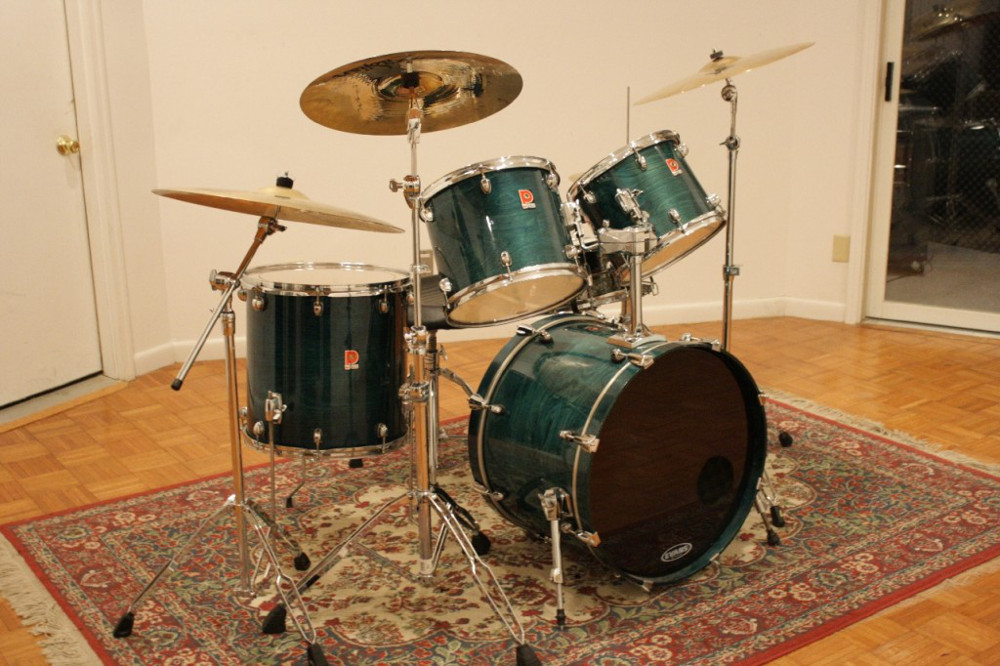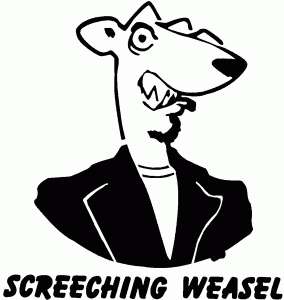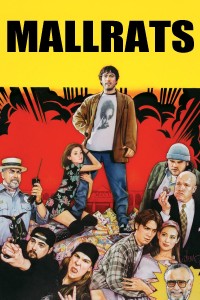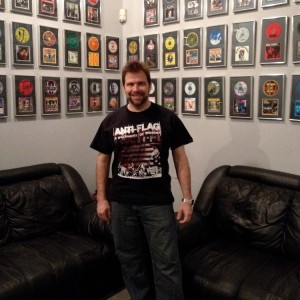Pure Punk: Recording with Mass Giorgini and Sonic Iguana Studios
In a small town in middle America is an intimate recording studio that has been a cornerstone in the Punk Rock history books. Sonic Iguana is run by musician, producer, engineer, Massimiliano “Mass” Giorgini.
Girorgini began as a musician and a student, with an interest in recording. He was mentored early on by Paul Mahern [John Mellencamp, Iggy Pop, Blake Babies], where he soaked up what he liked and didn’t like about the process, the atmospheres and the industry. His interest quickly took a turn to ambition when he realized what he would do differently, and decided to carve his own path.
With a DIY spirit, Sonic Iguana, located in Lafayette, Indiana, is a history book of Punk Rock from the late 80’s to now. Hundreds of artists like Billie Joe and Mike Dirnt of Green Day, Mike Kennerty of All-American Rejects, Anti-Flag, Rise Against, Alkaline Trio, Screeching Weasel, Jesse Michaels of Operation Ivy, One Man Army, Common Rider, John Strohm of the Lemonheads, Squirtgun, Dusty Trip (Spain), the Groove Ghoulies, Horace Pinker, the Peacocks (Switzerland), SuckerBox (the Cayman Islands), Los Pepiniyoz (Puerto Rico), Viernes13 (Spain), the Manges (Italy), and many more have all made records there. His label clients include Vagrant Records, Fat Wreck Chords, Asian Man Records, Adeline Records, Go Kart Records, Lookout Records, Hopeless Records, Tooth and Nail Records, Red Scare Records, Thick Records, Insubordination Records, Knock Knock Records, Honest Don’s Records, Universal Pictures, Disney Studios, MGM Studios, and Offtime Records, to name just a few.
Giorgini’s impact on the Punk Rock music scene for the past 25+ years has roots in everything from Anti to Pop Punk and Ska, to his own genre, he calls “Ramonescore”.
I sat down with Mass to talk a little bit about the history of Sonic Iguana, and Punk Rock then and now. Catch his incredible sound and production techniques in Part II of this interview, coming up soon on SonicScoop.
1990, you opened Sonic Iguana. Did it begin in this building?
No, this is the 3rd incarnation of Sonic Iguana. I originally started it in an industrial area on Whitewater Drive here in Lafayette. There were a lot of construction warehouses and ditch digging services and stuff.
What was your first recording experience?
My very first recording experience was with someone else recording, it was in my own basement.
A friend of mine had a really nice 2-track Otari 5050. He came in and recorded us live with a little mixer, miking us up. He recorded that live to reel to reel. I thought it turned out nicely but there were things I wanted to change of course. The band was Rattail Grenadier, the album was titled Three Blind and the producer was Gary Higgins.
Then Rattail Grenadier did another recording, and we got signed to a record label out of Chicago called Roadkill Records. It was an early and influential Punk label that put out the first edition and the biggest selling Screeching Weasel album, called Boogadaboogadaboogada simultaneously with the first Rattail Grenadier’s album. They also put out Bhopal Stiffs record, Pegboy, The Effigies, lots of classic Chicago Punk Rock. We were the only non-Chicago band. For that album, we recorded with Paul Mahern.
What year are we talking here?
I think that album, (Rattail Grenadier L.P.), was recorded in ’88. And that’s Paul Mahern’s production which I watched very closely how he was doing things because I was very interested. He was the producer and engineer in that, and he’s gone on to do a bunch of other things, he’s pretty big time.
But he started a Punk scene and was completely Punk scene connected. He sang for the Zero Boys which is one of the biggest Punk influences on me. Because they were a melodic Punk Rock band. He had produced many, many bands in the Punk Rock genre so he was one of my early heroes and mentors.
I ended up working with him. We did a couple of albums together but the one that sort of changed things for me was when we worked on the Judybats. They were a band with a Top 40 hit and this is their follow up album, so there’s lots of pressure from their label, a Sony affiliate, for another big radio hit, right?
There were lots of issues on the way that made me realize I didn’t like working in that sphere and I wanted to work more on the Punk Rock, DIY and “keep it real” or whatever you want to call it…
(Mass smiles suddenly and shifts gears) Which I’ve changed a lot since then (laughs) and probably become more like the major label production style that I didn’t like then. You know as time went on, you change, you grow, you wanna call it whatever you want. You evolve, devolve.
I definitely have changed since then, but at the time, I felt like I wanted to do my own studio. So I pushed back away from the more major label production approach.

Step inside the simplicity of Sonic Iguana.
What was your first record that you did on your own at Sonic Iguana?
Well, I had been doing records on my own before that in what I thought would be my project studio. But my first Sonic Iguana recording from 1990, was also for the Rattail Grenadier album titled Too Much of a Good Thing, released in 1991.
You’ve worked with bands from all over the world. Do you know most of the bands before they come to you?
In many cases yes, but some cases I got to know them in the studio. Then I started to really appreciate them and then going to see them live.
So in the case of working with a band you don’t really know, do you participate in a rehearsal situation, do you ask for demos?
It’s gone both ways. Let me say that the majority of my clients are from far away. I would consider a hometown or local band to be a Chicago band. I’ve had bands fly in from Spain, or Italy or Germany. We’ve had South American bands, Australia, etc. etc. So in those cases for me to go to their practices is not very practical, but what I have done is asked them to send me demos. And I want the demos to be as live as possible.
A lot has changed since the early days of Sonic Iguana recordings to now. What do you feel was a turning point for you in the sonics?
One of the things that has changed is that I was dabbling in different recording styles by recording bands during the week on a 4-track recorder at a club I ran called Spud Zero from 1987 to ’88. I would dabble with recording a little bit there to see what I could get out of things and… I had some luck. Some things turned out beautifully.
I got some very good guitar tones and some moderately good drum tones, but I didn’t have the right mics really to capture the drums. I didn’t have small diaphragm condensers. I had a few Shure SM-57’s which you just can’t get a good overhead sound or cymbal sound with that. But I didn’t have serious recording ambitions at the time.
When I opened the first Sonic Iguana, I was still thinking of it more as something I was doing to save some money and hopefully eventually get to the point where I could professionally record. And the funny part about it was, I knew almost zero about the technical side of recording. I only knew that I wanted 16 tracks, that I wanted to be able to separate the drums. That I wanted to be able to close mic the guitar amp and things of that sort.
But I didn’t know that I needed different kinds of mics, like “What’s a condenser mic? What’s a dynamic mic?” So when I started the studio, it was very, very rudimentary. In fact, the first two albums that I did that did fairly well were the Rattail Grenadier Too Much of a Good Thing — that’s the first one I fully recorded there. The overheads on that album though, were a pair of Audio Technica 41ATs, which were neodymium magnet, Shure 58 imitations. Totally not what you want on overheads.
Yeah! But you had two of them. (laughs)
(Smiles) Yes, I had two of them. And to make up for the fact that they didn’t have the highs that they should have had, I took the highest frequency on the board, which at that time was an Allen & Heath. I just took the 12k and whipped it up there. So it was a really weird sound but… that’s what I did.
And the next album I did, which was the Screeching Weasel Wiggle album, pretty much with the same recording. They heard that recording [Rattail’s Too Much of a Good Thing], they loved it. I don’t know why, but they wanted to do that on their album, so I recorded that.
That was my first Screeching Weasel album and it did pretty well, that thing sold somewhere in the ballpark of 100,000 copies. So for whatever reason, not due to the recording quality, it was a successful recording.
So here you are in Lafayette, Indiana and people started coming to you. Was it word of mouth, was it these two records, what was it that really got the ball rolling?

Chicago punkers Screeching Weasel was part of Mass’ start.
You could add a few factors together. One is that Screeching Weasel recorded here, they were on Lookout Records. Ben Weasel wanted to bring more stuff here for me to work on. He brought a Queers album which is their first one for Lookout Records. They were not a new band, they put out a couple of albums before that. Most of their albums were done with me, same with Screeching Weasel.
Both of those bands did the majority of their albums, certainly they did all of their big albums with me. So that meant that a lot of clientele came this way. But early on, the owner of Lookout Records, Larry Livermore, he came out here to the studio. The whole Lookout thing really started then. He really loved the studio, the environment and the way I worked with bands. I think he admired the fact too that I was willing to work almost around the clock with no sleep and I didn’t drink and do drugs.
He also loved my father. My father came by and checked in and he knew the bands and he was really involved in the music scene locally, observing and being a friend to everyone. That turned another tide, because bands that had nothing to do with Ben (Weasel), of Screeching Weasel or Joe Queer from Lookout Records, were getting sent here. Bands like the Crumbs from Florida, the Smugglers from Vancouver, BC. Bands like, The Groovie Ghoulies, from Sacramento.
All of a sudden bands from all over the place that were Lookout-connected started coming here. Now, Larry and I had had some involvement before that, because I had set up a show for Operation Ivy back in 1988, which prior to Green Day, they were the biggest band on Lookout Records.
Let me say this: Even though Operation Ivy was not as big a seller as Green Day, Operation Ivy, to the best of my knowledge, at this moment, is the #1 biggest selling album ever in the history of Independent Labels. Well over a million sold on an Indie label. And that was the biggest mentor band to Green Day. In fact Green Day still, every show they play, they cover one of their songs.
Operation Ivy broke up after the one album when Jesse Michaels went off to do something else. He had decided he didn’t want to be in music. But then he decided to come back and do an album, and by a series of strange coincidences, who does he think about doing an album with, but the guy he met but one time?

“Mallrats” had a major hand in putting Mass on the map.
So he calls me and says “Hey will you play bass for me?” And so I helped him put the band back together with Dan Lumley (drummer Rattail Grenadier). So the three of us became Common Rider, this new band. That was on an affiliate or subsidiary called Panic Button. That would have been ’98. In 1999, the album Last Wave Rockers came out. We did a second album in 2002 called This Is Unity Music, which I think is one of my favorite albums I’ve ever been involved with. As a musician and as a producer.
In 1995, your band Squirtgun was featured in the movie Mallrats. How did that come about?
That’s one of my very earliest breakthroughs. I was working with Billie Joe (Armstrong) from Green Day. We were co-producing an album. This is just after Dookie, they were already multi-platinum, right. The Riverdales were putting out an album and they asked me to co-produce with Billy Joe. I did most of the recording and Billy Joe and I mixed it together.
I helped Billy Joe build a tiny little studio in his home. We mixed it there and then added a few tracks. Billy added a couple of vocals, he added a couple of guitar parts. We worked together at his house for a couple of weeks and while I was there, I had brought him a tape of the new Squirtgun mixes.
While we were doing this Riverdales mix, the manager of Green Day at the time, Jeff Saltzman, came over. He said, to Billy, “I need more bands that are kind of like you guys”, you know pretty Poppy with a Punk edge, “because we’re putting together this sound track for this movie Mallrats.”
Billy says, “Well, Mass, his band Squirtgun is exactly what you want and they’ve got a great new song, you should probably put it on there.” So we played it for him and the guy loved it and says, he’s gonna play it for the director, Kevin Smith. So I gave him the cassette of “Social.” A week later I got a call from Kevin Smith and he made it the theme song for the entire movie.
What was the catalyst for opening your own studio?
In 1990 I opened Sonic Iguana. I decided I wanted a studio that specialized in Punk Rock. I think this is the first studio built and designed to be a Punk Rock studio in the world. I can’t think of one before it.
Why did you stay here, in Indiana, when you could have taken this anywhere?
It’s all nostalgia. I was asked by Larry Livermore (Lookout Records) to move the studio to Berkley, which would have been wise financially. I was also asked by Billy Joe (Armstrong) to build a studio there that he would help me fund. Both of these guys were willing to set me up.
At the time I just didn’t want to. My father had just passed away. He had helped me build the studio. Not meaning financially, but he would actually come and help me build the walls and give me advice and work with me. He just wanted to give a hand, he was very supportive.
Coming Up – Part II: Mass’ Massive Recording Techniques
Brian Speaker is a music producer, engineer and studio owner of SpeakerSonic Studio in Brooklyn, NY. He works with rock, punk, folk and singer/songwriter acts from all around the world. http://www.brianspeaker.com
Please note: When you buy products through links on this page, we may earn an affiliate commission.







